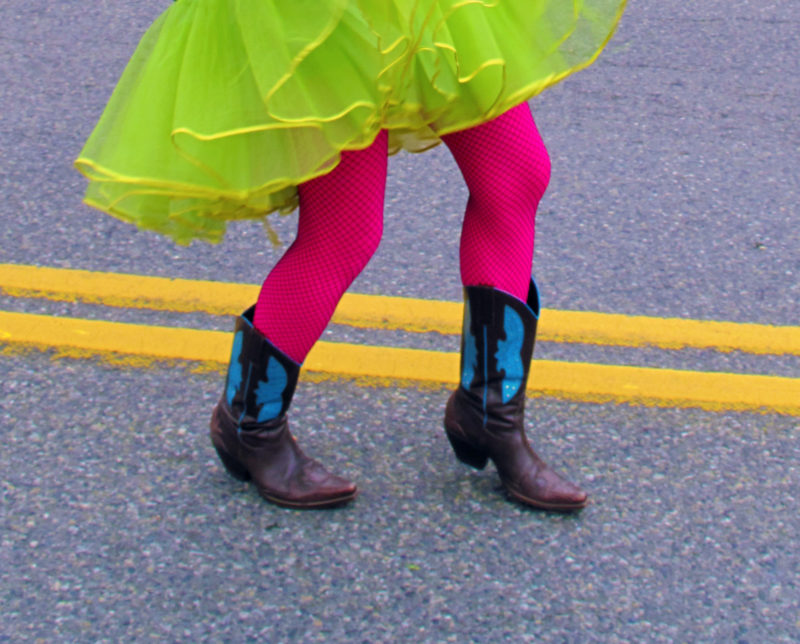
Whether you see someone doing a little jig on the street or you watch the most amazing ballet performance, the appreciation of people’s movements is often enhanced by the costumes they are wearing. In addition to providing warmth and protection, fabrics have been used throughout centuries to augment certain aspects of human performance, be it on stage, or in the boudoir, on the sports- or the battle-field, in uniform, tribal colors or under one’s flag.

The dance aspect was driven home to me last summer at the Philadelphia Art Museum which presented a nifty little exhibit on Dance – Movement/Rhythm/Spectacle. Paintings, lithographs and photographs about dance from the museum’s collection depicted costumes and dresses that caught my attention. The cross section below ranges from Toulouse-Lautrec from the portfolio Le Café Concert, Carlos Mérida Dance of the Quetzals, Leon Bakst The Pilgrim for the Ballet Russe’s performance of Le Dieu Bleu; one of the represented photographers was Barbara Morgan who photographed Martha Graham’s company at length.



And then there was Loîe Fuller, who knew how to make fabric fly – I just learned about her from indispensable dance critic Martha Ullman West who keeps me on my toes. The short clip below is a marvel.
https://www.youtube.com/watch?v=O8soP3ry9y0
Fuller was partly responsible for the creation of one of the great treasures of WA, the Maryhill Museum. I will devote another essay to that jewel eventually. For now, here is a clip of the fabulous 1946 exhibit that is now in their permanent collection, of French fashion on small mannequins, all the fashion I am willing to mention in the context of fabrics. I cannot recommend a visit of the museum strongly enough. Eclectic only begins to describe it. http://www.maryhillmuseum.org/visit/exhibitions/ongoing-exhibitions/theatre-de-la-mode






Martha Ullman West
Nice, Friderike, especially the film clip which “indispensable” me had forgotten about. Loie Fuller was arguably the first lighting designer for dance; she danced on a glass platform lighted from underneath with many many incandescent light bulbs. Her costumes were made of silk and she manipulated the fabric with bamboo rods while she danced, and patented her designs moreover. So glad you posted all the photographs and couldn’t agree more about the marvels of the Maryhill Museum, which also contains Fuller’s correspondence with Queen Marie of Romania.
Steve Tilden
Ahah! I wondered how the lighting changed so perfectly. I wanted to slow her down a bit, but I expect that was because of the photographic capacities of the time. Reminded me of the wonderful ease of flow of larger birds, their forms rippling through the invisible air, adjusting angles and extensions to control their flight.
Maryellen Read
lovely – especially today’s entry